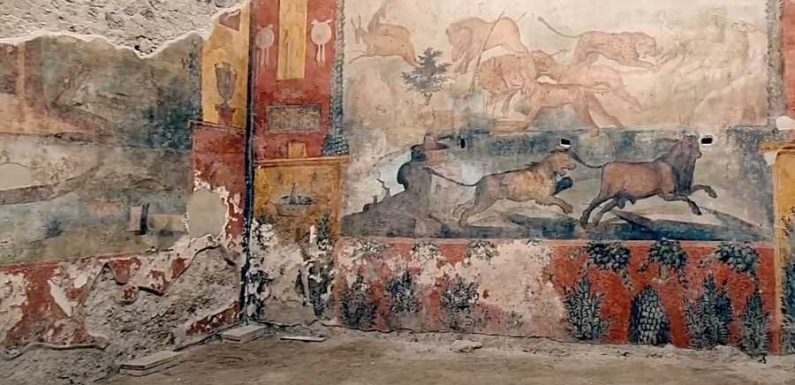
Restored frescoes from an ancient house in Pompeii were recently given their close-up and were revealed to the public this week.
Using lasers, experts from the Archaeological Park of Pompeii were able to restore the fresco's original striking colors and scenes, the group shared in a press release on Thursday. The lasers cleaned a layer of paint film off the fresco which revealed, "a hunting scene with wild animals, alongside Egyptianized landscapes, populated by Pygmies and beasts of the Nile Delta, depicted on the side walls."
Located in the House of the Ceii, the home likely belonged to a local magistrate at the time.
The frescoes decorated the back wall of the house's garden and would have been seen by anyone who visited the house. They "served to create the illusion of expanding the size of the area, and evoking an idyllic and evocative atmosphere," the Archaeological Park said.
The House of the Ceii was excavated between 1913 and 1914 and has been dated back to 2nd century B.C. Its owner was likely interested in Egyptian culture, particularly the cult of the goddess Isis, which inspired the scenes depicted in the fresco.
Egyptian themes were prevalent throughout "the last years of the city's life due to a very influential college in the city," Massimo Osanna, interim director of the Archaeological Park of Pompeii, told CNN of their findings.
In recent years, the house has undergone several projects for redevelopment, including roofing maintenance and recreating its original layout.
Much of the city of Pompeii remains buried beneath a layer of ash from the infamous explosion of Mt. Vesuvius, but archaeologists are still unearthing artefacts. Earlier this year, Pompeii's Antiquarian museum reopened to the public after decades closed.
Cailey Rizzo is a contributing writer for Travel + Leisure, currently based in Brooklyn. You can find her on Twitter, Instagram, or at caileyrizzo.com.
Source: Read Full Article









